
The Beatnik Bandit is a custom car created in 1961 by Ed "Big Daddy" Roth. The car features a clear bubble canopy. Speed and direction are controlled by a central joystick in the cabin.

The Beatnik Bandit is a custom car created in 1961 by Ed "Big Daddy" Roth. The car features a clear bubble canopy. Speed and direction are controlled by a central joystick in the cabin.
The car originally appeared as a sketch in a project for Rod & Custom magazine called "The Grapes of Roth". [1] This early design, featuring a tall T-type roof, was drawn by Joe Henning without much input from Roth. There are at least two stories for the origin of the car's name. One is that Roth approached Henning with the idea for the car and asked him "What am I going to call it?", to which Henning replied "You've got the Outlaw. Why not call this one the Beatnik Bandit?" [1] Another version is that Roth read a news story about a bank robber nicknamed "the Beatnik Bandit" and decided to adopt the label for his car. [2]
When Roth began building the Bandit both the design and car went through a series of changes, including the addition of the bubble top that was inspired by the glass of the DiDia 150. [2] At first Roth tried to adapt a canopy salvaged from a B-36 bomber to the car but was unsuccessful, so a custom plexiglas canopy was made. Roth claimed that he produced the part himself in a pizza oven by blowing the plastic sheet up like a balloon, but it is believed that it was actually produced by Acry Plastics in Los Angeles, who had produced similar parts for Ron Aguirre. [1]
Construction of the car consumed 2,000 lb (907.2 kg) of plaster, 42 yd (38.4 m) of fiberglass cloth, and 50 US gal (189.3 L) of resin. [3] Much of the work preparing the body was done by Doug "Dirty Doug" Kinney. Many have speculated as to whether Roth made a mold of the body. Pictures in a magazine article seem to hint at the existence of one but no such molds have ever been found. [1] The car was painted at Larry Watson's Watson's House of Style, where Roth traded the paint work for a supply of Rat Fink T-shirts. [4]
The Bandit was featured on the cover of the May 1961 edition of Car Craft magazine. It was also the subject of an article titled “Bandit at Large” in the July 1961 issue of Rod & Custom magazine. [1] Retrospectives of the car appeared in the 1991 issue of Rod & Custom and the March 2002 issue of Custom Rodder.
Roth trailered the Bandit around the US to various car shows, towing it with a Cadillac hearse that he lived out of. [2] At shows Roth used a remote control that plugged into the Bandit on a long cord to remotely start the engine, turn the wheels and raise and lower the canopy. Roth sold both the Beatnik Bandit and the Outlaw to Bob Larivee, who continued to show the cars until around 1963. Larivee traded both cars back to Roth in exchange for the Mysterion. Roth then leased the Bandit to Ray Farhner who had the car painted a metallic green. Jim Brucker bought the car from Roth for $50 in 1970 and displayed it in his Movieland Cars of the Stars museum. Harrah's Automobile Collection eventually acquired all of Brucker's Roth cars, including the Bandit. [1] In 1985 the car was restored to its original condition and since then has been on permanent display at the National Automobile Museum in Reno, Nevada. [4]
In 1995 Roth unveiled the Beatnik Bandit II. [5] This successor to the 1961 Bandit featured many styling cues from the earlier car but was powered by a fuel injected 350 cu in (5.7 L) Chevrolet LT-4 engine. [6]
The Beatnik Bandit is built on a shortened Oldsmobile chassis. While one source says that it was of 1955 vintage, most believe that the chassis actually dates from 1950. [1] [7] The front suspension is independent with kingpins and A-arms and in the back is a solid axle with trailing arms. Coil springs are used at all four corners. The original wheels were chromed reverse steel with baby moon hubcaps.
Power comes from a 303 cu in (5.0 L) Oldsmobile V8 engine fitted with twin Ford carbs and a GMC 4-71 supercharger courtesy of Bell Auto Parts. [8] The engine was built by Fritz Voight. There is extensive use of chrome plating, including most of the exposed engine and all of the front suspension parts. The transmission is a 4-speed Hydramatic automatic unit. [1]
The Bandit does not have a traditional steering wheel or floor pedals. Steering, throttle, transmission, and braking are all controlled by a chrome-plated joystick mounted on the center tunnel. [8] The steering linkage is driven by a hydraulic ram. There is a single large round gauge in the middle of the dashboard. Upholstery was done by Eddie Martinez. [1]
The Plexiglas canopy, which doubles as a roof and door, is hinged at the front. It is raised and lowered by convertible top rams that are operated by pressing on an antenna mounted on the fender. [9]
Revell signed a contract with Roth to develop kits for them in 1961. [10] Revell issued a 1/25 scale model of the Beatnik Bandit developed by Roth working with Jim Keeler in 1963 and reissued it in 1994.
In the late 1960s toy company Mattel contacted Roth about making a small die-cast car based on his design. [11] Designer Harry Bentley Bradley developed a 1/64 scale version of the Bandit. When the Hot Wheels line was launched in 1968 the Beatnik Bandit was one of the "Sweet 16" original 16 Hot Wheels designs. [12] Mattel issued a 10,000-unit special edition in 2001, just months after Roth's death. [10] They also released a larger 1/18 scale version.

The term 1932 Ford may refer to three models of automobile produced by Ford Motors between 1932 and 1934: the Model B, the Model 18, and the Model 40. These succeeded the Model A. The Model B had an updated four-cylinder engine and was available from 1932 to 1934. The V8 was available in the Model 18 in 1932, and in the Model 40 in 1933 & 1934. The 18 was the first Ford fitted with the flathead V-8. The company also replaced the Model AA truck with the Model BB, available with either the four- or eight-cylinder engine.
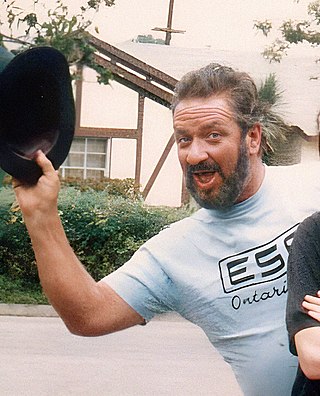
Edward "Big Daddy" Roth was an American artist, cartoonist, illustrator, pinstriper and custom car designer and builder who created the hot rod icon Rat Fink and other characters. Roth was a key figure in Southern California's Kustom Kulture and hot rod movement of the late 1950s and 1960s.

Kustom Kulture is the artworks, vehicles, hairstyles, and fashions of those who have driven and built custom cars and motorcycles in the United States of America from the 1950s through today. It was born out of the hot rod culture of Southern California of the 1960s.

Revell GmbH is an American-origin manufacturer of plastic scale models, currently based in Bünde, Germany. The original Revell company merged with Monogram in 1986, becoming "Revell-Monogram". The business operated until 2007, when American Revell was purchased by Hobbico, while the German subsidiary "Revell Plastics GmbH" had separated from the American firm in 2006 until Hobbico purchased it in 2012, bringing the two back together again under the same company umbrella. After the Hobbico demise in 2018, Quantum Capital Partners (QCP) acquired Revell.
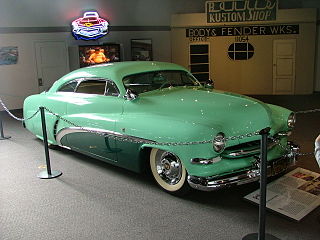
A custom car is a passenger vehicle that has been either substantially altered to improve its performance, often by altering or replacing the engine and transmission; made into a personal "styling" statement, using paintwork and aftermarket accessories to make the car look unlike any car as delivered from the factory; or some combination of both. A desire among some automotive enthusiasts in the United States is to push "styling and performance a step beyond the showroom floor - to truly craft an automobile of one's own." A custom car in British according to Collins English Dictionary is built to the buyer's own specifications.
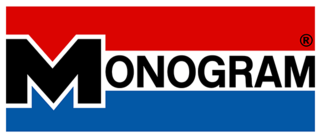
Monogram is an American brand and former manufacturing company of scale plastic models of cars, aircraft, spacecraft, ships, and military vehicles since the early 1950s. The company was formed by two former employees of Comet Kits, Jack Besser and Bob Reder.

The Orbitron is a custom car built by Ed Roth and feared lost until its rediscovery in Mexico in 2007.
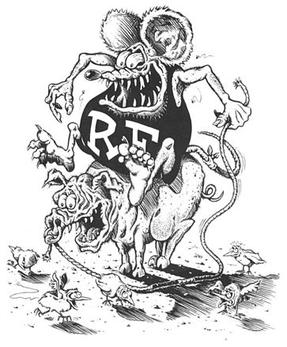
Rat Fink is one of several hot rod characters created by artist Ed "Big Daddy" Roth, one of the originators of Kustom Kulture of automobile enthusiasts. Roth conceived Rat Fink as an anti-hero to Mickey Mouse. Rat Fink is usually portrayed as either green or gray, comically grotesque and depraved-looking with bulging, bloodshot eyes, an oversized mouth with sharp, narrow teeth, and wearing red overalls with the initials "R.F." on them. He is often seen driving cars or motorcycles.
Dean Moon was an American automobile designer. He grew up in Norwalk, California. Moon was around cars and racing from his youth. His father owned "Moon Café" and had a go-kart track he called "Moonza", a pun on Monza. Dean was involved in dry lakes hot-rodding in the late 1940s. He founded MOON Speed Equipment (c.1950) and worked to improve the quality and safety of speed and racing products his entire life.

The Detroit Autorama, also known as America's Greatest Hot Rod Show, is a showcase of custom cars and hot rods held each year at Huntington Place in Detroit, Michigan, in either late February or early March.

The Aurora Plastics Corporation was an American toy and hobby manufacturing company. It is known primarily for its production of plastic scale models of cars, airplanes, and TV and movie figures in the 1960s. Its principal competition in modeling were various other plastic modeling firms like Revell and Monogram.

Model Products Corporation, usually known by its acronym, MPC, is an American brand and former manufacturing company of plastic scale model kits and pre-assembled promotional models of cars that were popular in the 1960s and 1970s. MPC's main competition was model kits made by AMT, Jo-Han, Revell, and Monogram.
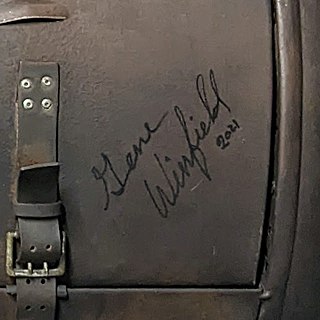
Gene Winfield is an American automotive customizer and fabricator. In the mid-1960s, his designs caught the attention of the film community, resulting in a large body of his work appearing on screen, including in the iconic 1982 film Blade Runner.

The Deora is a 1965 Dodge A100 pickup truck that was heavily customized by Mike and Larry Alexander in Detroit for the 1967 Detroit Autorama. Harry Bentley Bradley, known for his Bradley GT kit cars, also helped with the design and build process. After winning many awards, including the Ridler in 1967, it became the prototype for a Hot Wheels car, and plastic model kit. It was sold at auction in 2009 for US$324,500.
Ala Kart is a custom car, a customized 1929 Ford Model A roadster pickup, built by George Barris, Richard Peters, and Mike "Blackie" Gejeian in 1957. Originally owned by Peters, it is a two-time winner of the Grand National Roadster Show "America's Most Beautiful Roadster" (AMBR) trophy and Hot Rod cover car in October 1958. Featured in hundreds of car shows, Ala Kart has won more than 200 trophies. It has also made numerous appearances in movies, usually in the background of drive-in shots, and dozens of magazine articles since. It is considered by many to be "one of the most iconic hot rods ever built."
Yellow Fang is a streamliner slingshot dragster.
Bill Cushenbery was an American car customizer, show car builder, and model kit designer. Cushenbery was a major influence on the look of custom cars and the customizing industry in general. In addition to building his own designs, he is noted for having helped George Barris create the Batmobile car featured in the 1966–1968 Batman television series.
El Matador is a custom car built by Bill Cushenbery during 1959–1961. It was his first show car.
Silhouette was an award-winning show car built by Bill Cushenbery in 1962. It debuted at the 1963 Oakland Roadster Show.
Uncertain T is a show car built by Car Craft photographer Steve Scott in 1965.